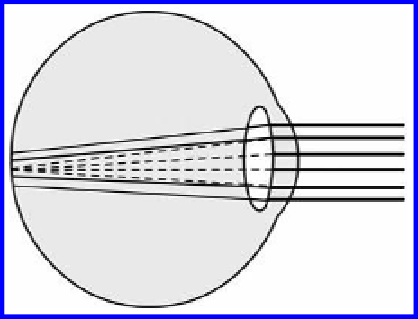Biomedical Engineering Reference
In-Depth Information
observing the phenomenon. In the following section, a number of simple exper-
iments are shown to get the right feeling of the human capability and what dis-
tortions that may occur in the perception process when observing the nature. In
connection to this approach, the after-word may be useful to read and to reflect
upon the contents regarding the human's correlation to nature.
2.3.1 The Human body in an Unnatural Environment
This illustration will show what discrepancies may occur with the perceptual
senses when interacting with surroundings that are not our natural habitat and
therefore not effectively adapted to our sensing organs. To put the human body
under water can be an experience to exhibit extraordinary indistinct and a feeling
of a hazy and unclear situation. The human sensing capability perceive different
than its normal conditions and a feeling of unnatural perception of an unusual
situation outside our normal habitat is experienced. This situation will affect our
senses in a different manner. The hearing and smelling capabilities are blocked,
the pressure on the skin, actually the whole body, indicates an abnormal situation.
When we open our eyes, we experience that our visual system has some discrep-
ancy, that is the picture we experienced under water is blurred and the objects
seem fuzzy. Under water the light refracts differently than in the air and the eye
loses its ability to focus.
When the body is in the air, it is the outer surface of the eye, the cornea, which
collects the rays of light and causes the formation of an image on the retina. This is
only supported slightly by the crystalline lens. However, under water the cornea
is neutralised, because the fluid refractive index in the eye and the water outside
it are nearly equal. This optical phenomenon causes the eye to affect the rays to go
straight on without any refraction influence at the bounding surface of the cornea
and we may see it as a difference from the normal mode as illustrated in Fig. 2.11.
The illustration has now demonstrated an excellent means of judging how in-
sufficient the crystalline lens would work, if that alone was responsible for the
Figure 2.11.
Visual impressions by formations in the eyes; (a) in the air. and (b) under the
water.








Search WWH ::

Custom Search